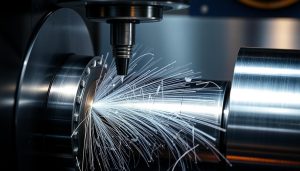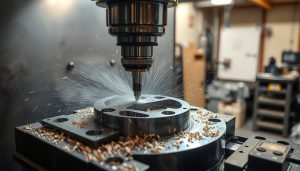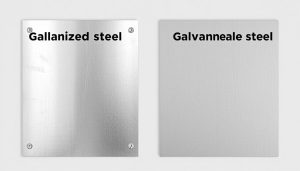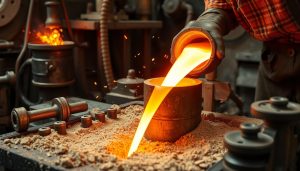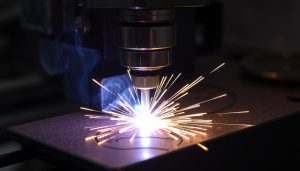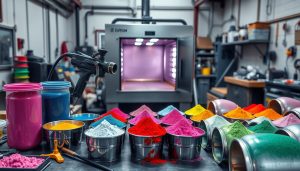In the world of mechanical engineering, the terms “knurl” and “spline” are often encountered, yet their differences may not be immediately apparent. These two distinct features play crucial roles in enhancing grip and transmitting torque, respectively, making them essential components in a wide range of applications. This introductory section will delve into the fundamentals of knurls and splines, setting the stage for a deeper exploration of their unique characteristics and applications.
What is a Knurl?
A knurl is a distinctive surface texture found on various tools and mechanical components. This textured pattern is created through a process called knurling, which serves a vital purpose in enhancing the grip and handling of these items. The intricate surface texture of a knurl not only improves the surface texture but also provides grip enhancement – making it an essential feature in many knurling tools and applications.
The Knurling Process and Its Purpose
The knurling process involves pressing a toothed wheel or roller against the surface of a workpiece, creating a series of parallel or intersecting ridges and grooves. This intricate pattern increases the friction and traction between the object and the user’s hands, enabling a secure and controlled grip. The knurling process is commonly used on tools, machinery, and various industrial components to enhance the user’s ability to handle and manipulate these items effectively.
Materials and Applications of Knurling
Knurling can be applied to a wide range of materials, including metals, plastics, and even some woods. This versatile technique is widely used in the automotive, manufacturing, and construction industries, where a reliable grip is crucial for tasks such as tightening or loosening nuts and bolts, adjusting settings, or handling heavy equipment. From tool handles and machine knobs to firearms and motorcycle parts, the surface texture created by knurling plays a vital role in grip enhancement and overall functionality.
Types of Knurls: Diamond, Straight, and More
- Diamond Knurl: A pattern of intersecting diagonal ridges, creating a distinctive diamond-like appearance.
- Straight Knurl: Parallel ridges running perpendicular to the axis of the workpiece, providing a linear grip pattern.
- Crossed Knurl: A combination of straight and diagonal ridges, offering a more complex and textured surface.
- Spiral Knurl: Ridges that run in a spiral pattern, providing a unique and visually appealing grip surface.
The choice of knurl type depends on the specific application and the desired level of grip enhancement required. Each variation offers unique advantages, allowing manufacturers and designers to tailor the surface texture to meet the needs of their knurling tools and products.
What is a Spline?
A spline is a mechanical element that serves a crucial role in transmitting torque between rotating components. Unlike knurls, which provide enhanced grip, splines are designed to establish an internal connection. This connection allows for the efficient transfer of rotational force, making splines an integral part of various industrial applications.
The Spline Process and Its Purpose
The spline manufacturing process involves creating a series of parallel, longitudinal grooves or ridges on the surface of a shaft. These grooves interlock with corresponding teeth or slots on a mating component, such as a hub or gear. This internal connection ensures a secure and precise fit, enabling the components to rotate in unison and transmit torque transmission effectively.
Materials and Applications of Splines
Splines are typically made from durable materials like steel, allowing them to withstand the demands of high-stress applications. They are widely used in the automotive, aerospace, and industrial machinery sectors, where the internal connection provided by splines is essential for managing the transfer of power and motion.
Types of Splines: Parallel, Radial, and More
- Parallel Splines: These splines feature straight, parallel grooves that run the length of the spline shaft. They are often used in applications where high torque transmission is required, such as in automobile transmissions and power takeoff systems.
- Radial Splines: Instead of parallel grooves, radial splines have teeth that radiate outward from the center of the shaft. This design provides a secure, positive fit and is commonly found in gear boxes, differentials, and other mechanical assemblies.
- Involute Splines: These splines have a curved, involute profile that allows for a more gradual engagement between the shaft and the mating component. This design helps to distribute stress more evenly, making involute splines suitable for high-speed and heavy-duty applications.
| Spline Type | Key Features | Common Applications |
|---|---|---|
| Parallel Splines | Straight, parallel grooves | Automotive transmissions, power takeoff systems |
| Radial Splines | Teeth that radiate outward | Gear boxes, differentials, mechanical assemblies |
| Involute Splines | Curved, involute profile | High-speed and heavy-duty applications |

Key Differences Between Knurls and Splines
While knurls and splines may appear similar at first glance, they serve distinct purposes in mechanical design and engineering applications. Understanding the key differences between these two surface patterns can help you make informed decisions when selecting the appropriate solution for your project.
Functionality: Enhancing Grip vs. Transmitting Torque
The primary function of knurls is to enhance the grip of a component, making it easier to hold, turn, or manipulate. The textured surface of a knurl provides increased friction, which is particularly useful in applications where a secure grip is essential, such as tools, handles, or knobs.
In contrast, splines are designed to transmit torque or rotational force between two components. The interlocking teeth of a spline allow for a secure connection, enabling the efficient transfer of power and movement between mating parts, such as in gear assemblies or power transmission systems.
Geometry: Surface Texture vs. Internal Connection
Knurls are characterized by their distinctive surface patterns, which can be diamond-shaped, straight, or a combination of both. These patterns create a textured surface that enhances grip and friction. Splines, on the other hand, feature an internal connection that is often parallel, radial, or a combination of multiple spline types.
The geometry of knurls is focused on modifying the external surface, while splines are designed to create a secure internal connection between components, ensuring efficient power transmission.
Applications: Knurls for Grip, Splines for Mechanisms
The unique characteristics of knurls and splines make them suitable for different applications in mechanical design and engineering. Knurls are commonly used in products where a secure grip is essential, such as hand tools, automotive components, and consumer electronics. Splines, on the other hand, are widely used in mechanisms that require the transmission of torque, such as gear boxes, power takeoff units, and shaft-to-hub connections.
By understanding the key differences between knurls and splines, you can make more informed decisions when selecting the appropriate surface pattern or internal connection for your mechanical design projects, ensuring optimal performance and functionality.

Choosing Between Knurls and Splines for Your Project
When it comes to mechanical engineering projects, the choice between knurls and splines often depends on the specific requirements and design considerations at hand. Understanding the unique benefits and applications of these two features can help you make an informed decision that aligns with your project’s needs.
When to Use Knurls
Knurls are an excellent choice when enhancing grip and preventing slippage is a crucial factor. Their textured surface provides a secure hold, making them ideal for applications where manual manipulation or increased traction is essential. This could include handles, knobs, or any other components that require a firm grip. Knurls are also commonly used in manufacturing processes, such as turning and milling, where they help improve the operator’s control over the workpiece.
When to Use Splines
Splines, on the other hand, excel at transmitting torque and power between rotating components. They are particularly well-suited for applications involving mechanisms, such as gears, clutches, and couplings, where the precise transfer of rotational force is critical. Splines provide a secure connection, allowing for the efficient transmission of power while maintaining alignment between the mating parts. If your project requires the reliable transfer of torque, splines may be the optimal choice.
